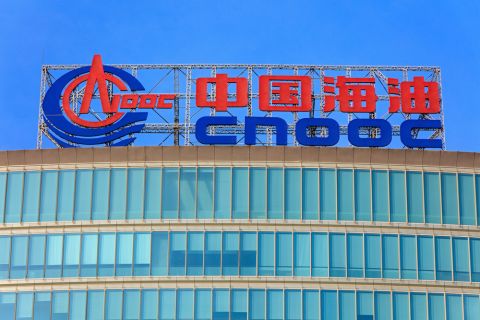
While one expert points to rising electric vehicle and ‘transportation-as-a-service’ in the U.S. as a possible death knell for the Alberta oil sands, others say, not so fast.
A new study from author and Stanford University lecturer Tony Seba has raised eyebrows in the Canadian oil patch. He forecasts that by 2030, electric vehicles will account for 95% of the miles traveled in the U.S., which is the sole market for Canadian oil exports.
As if that prediction isn’t remarkable enough, Seba said global oil production will fall from 100 million barrels per day (MMbbl/d) to 70 MMbbl/d, which, if true, would possibly devastate the high-cost 2.7 MMbbl/d Alberta oil sands industry.
The trigger for what Seba calls “one of the fastest, deepest, most consequential disruptions of transportation in history” will be the perfection of electric vehicle (EV) self-driving technology. Companies such as Uber and Lyft will buy fleets of autonomous cars and charge users to ride, a business model known as “transportation as a service.”
After more than a century of private auto ownership, families and businesses will give up their cars because transportation costs will simply fall off a cliff, said Seba, who co-authored “Rethinking Transportation 2020-2030: The Disruption of Transportation and the Collapse of the ICE Vehicle and Oil Industries” with Bryan Hansel and James Arbib.
The new way of getting around town will be 4x to 10x cheaper per mile than a new car, and 2x to 4x cheaper than a paid-off vehicle, with the average American household saving a whopping $5,600 annually.
In an interview, Seba said that under the right conditions, he can even foresee “free transportation” supported by advertising revenue: “There is nothing magical about it. This is driven by the economics.”
The economics are that at present, Americans use their vehicles only 4% of the time. The study estimates transportation-as-a-service companies will have their EVs on the road earning money at least 40%—and maybe even 50% to 80%—of the time.
And EVs will seemingly run forever, lasting 500,000 miles while requiring far less maintenance and repair than internal combustion engine (ICE) autos, whose life on average is only 140,000 miles.
“Many automakers are working on million-mile electric vehicles, which drives down costs even lower,” Seba said.
As fewer cars travel more miles, the number of passenger vehicles on American roads will drop from 247 million to 44 million.
Dr. Fred Beach, assistant director for energy and technology policy at the Energy Institute at the University of Texas at Austin, said in an interview that Seba’s basic math works. “In general, I agree with him. All the macro trends he talks about—electrification, autonomous vehicles, ride-sharing—it's the combination of those technology trends and those business model trends that compound one another and raise the potential of a very rapid tipping point,” he said.
This is not good news for the Alberta oil sands. Kevin Birns of IHS Markit in Calgary said oil sands in situ production requires $50/bbl to $60/bbl WTI on a full-cycle basis to break even, while mines are above $80/bbl. Costs will likely come down as producers respond to new Alberta government emissions regulations by reducing or replacing steam with solvent in situ operations.
But can the oil sands survive a collapse in demand coupled with fierce competition from low-cost producers like Saudi Arabia?
“New transportation options such as car-sharing, ride-hailing and autonomous cars will change how consumers view and value personal mobility,” Birns wrote in a December 2016 report. “Today, this is probably the greatest uncertainty facing both the automotive and energy industries.”
The silver lining for Alberta oil sands companies is that the highly disruptive future may be much further off than Tony Seba imagines. His model has too many moving parts that must come together for the 2030 forecast to work, said Chris Robinson, analyst at Lux Research in Boston.
“I have an issue with the assumption there will be enough autonomous electric vehicles produced to meet the anticipated need. Automotive companies’ design cycles take 10 years,” he said in an interview.
“It's going to be really challenging for them to start producing and making vehicles in the time frame that this report discusses.”
An even more important constraint for the transportation-as-a-service model is the current immature state of autonomous driving technology.
“You need a fully autonomous vehicle. Not something like the autopilot from Tesla or what a lot of other OEMs are investigating right now. You need full point A to point B autonomy,” said Robinson.
“My colleagues on the autonomous systems team at Lux think in an optimistic scenario, we could see full autonomous driving emerge between 2025 and 2030.”
Both Beach and Robinson point to numerous other obstacles that will probably slow down the adoption of transportation as a service: the reluctance of the insurance industry to support the model; North Americans’ attachment to car culture; the time it will take the market to sort out which business and service models work, and so on.
Both agree that the transition to transportation as a service is inevitable, just as Seba argued. The only real issue is when. And if you’re the CEO of an oil sands company wondering if your multibillion-dollar assets might be stranded, when is a very, very important question, said Beach.
“It will happen in my lifetime, I think. And it could take off quickly, just as Seba postulates. But once it does take off—whether that's 5 years or 10 years or 15 years from now—the acceleration up the S-curve will be quite rapid,” said Beach.
Recommended Reading
CNOOC Makes 100 MMton Oilfield Discovery in Bohai Sea
2024-03-18 - CNOOC said the Qinhuangdao 27-3 oilfield has been tested to produce approximately 742 bbl/d of oil from a single well.
CNOOC Finds Light Crude at Kaiping South Field
2024-03-07 - The deepwater Kaiping South Field in the South China Sea holds at least 100 MMtons of oil equivalent.
Orange Basin Serves Up More Light Oil
2024-03-15 - Galp’s Mopane-2X exploration well offshore Namibia found a significant column of hydrocarbons, and the operator is assessing commerciality of the discovery.
Sinopec Brings West Sichuan Gas Field Onstream
2024-03-14 - The 100 Bcm sour gas onshore field, West Sichuan Gas Field, is expected to produce 2 Bcm per year.
E&P Highlights: March 11, 2024
2024-03-11 - Here’s a roundup of the latest E&P headlines, including a new bid round offshore Bangladesh and new contract awards.






